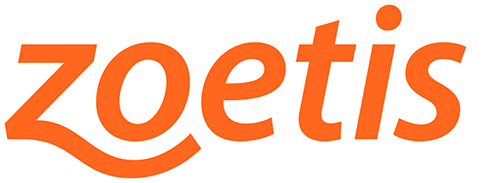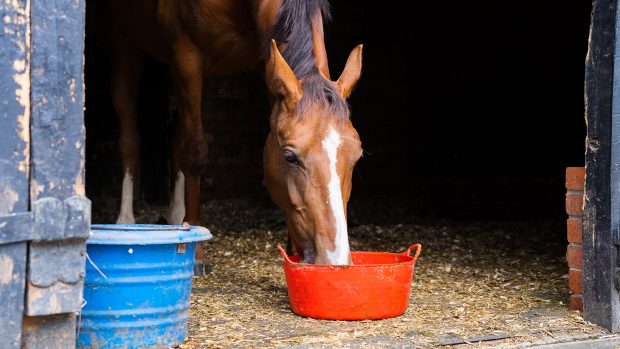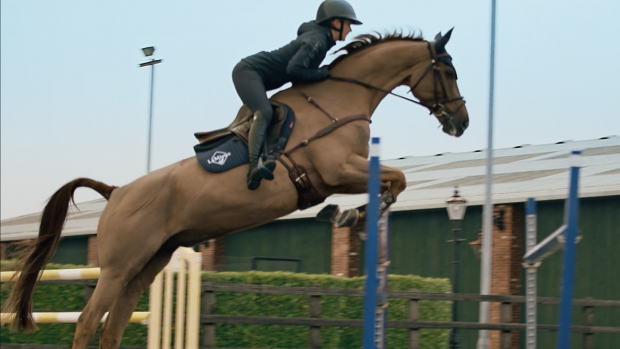Advertising Feature
The worming experts at Zoetis have put together the ultimate jargon-buster to help you get to grips with some of the common terms used to explain worm control.
Accurate dosing: Selecting the most appropriate wormer for the parasite targeted and dosing according to the weight of the horse. Accurate dosing helps to maintain the effectiveness of the wormers available.
ESRW: Encysted small redworm – the larval stages of the small redworm living inside the gut wall. They are one of the most common and harmful worms found in horses.
FWEC: Faecal worm egg count. The number of worm eggs in the dung sample are measured and then reported as eggs per gram (epg). For a mature horse (under three-years-old) the standard level requiring treatment is usually above 200epg depending on the horse’s worming history. It’s worth noting that if you receive the result under 50epg (no eggs seen) this doesn’t guarantee that there were no eggs in the sample as only a very small sample is studied under the microscope. Encysted small redworm, tapeworm and bots will not show up in a standard FWEC.
Individual approach: All horses respond differently to the same circumstances so it’s imperative to assess every horse independently as well as of a part of the group in which it is kept, when you plan your worming tactics.
Pasture management and FWECs: Good pasture management and regular faecal worm egg counts (FWECs) are now seen as the lynchpins of a good worm management programme, especially during the grazing season. The former should help to keep the worm burden on the pasture to the minimum while the latter will help you to target the right horses with the right wormer at the right time.
Resistance: This is when a parasite population previously controlled by a drug is no longer susceptible to that drug. The active ingredient of the horse wormer kills the sensitive parasites in the population, but those parasites not affected go on to create new generations of resistant parasites. Frequent dosing or under-dosing can cause resistance to occur, as can the effectiveness of the wormer. Under dosing means that parasites which are only partially susceptible to the drug may survive and reproduce instead of being killed as expected with the correct dose. Dosing correctly and as infrequently as possible is the key to managing the issue of resistance in our horses.
Rotation: This refers to the now outdated practice of using a different class of drug each time you worm your horse to try and prevent resistance to any one wormer ingredient. Rotation alone will not prevent the onset of resistance as there are not enough drug classes to rotate to enable this method to work. Reducing frequency of treatment and selectively treating those horses that need it is more important than rotating a product every time through the grazing season. It is now recognised as best practice always to select the most effective wormer for the type of worms targeted.
Refugia are the worms that, for whatever reason, remain unexposed to the wormer used and therefore the development of resistance is minimised. These worms importantly contribute to the next generation of worms and may then be susceptible to the next wormer used. They helpfully counter the population of worms generated from resistant stock that will continue to breed resistant worms. The largest and most important source of refugia is parasites on the pasture and those parasites in horses that are not treated. A smaller source is any stages not treated by a wormer (i.e. larval stages).
Routine worming: Worming at pre-set intervals throughout the year – now largely regarded as outdated as it can encourage resistance to occur.
Strategic worming: Worming with a specific wormer at certain times of year, that have been identified as the optimum times to treat for these particular parasite burdens. E.g. tapeworm and ESRW in the autumn.
Targeted or selective worming: Worming to treat for a specific type of worm in only those animals that need it. For strongyles this is most effectively done following a faecal worm egg count (FWEC).
Always talk to your vet or SQP
Make sure you choose the right worming methods and products for your horse’s circumstances by discussing your worming programme with your vet or a Suitably Qualified Person (SQP). You may find it helpful to look at Zoetis’s encysted small redworm website at www.esrw.co.uk
You can test your knowledge before discussing the best treatment options with your vet or SQP The site contains an informative video, a quick quiz and a helpful advice leaflet that can be downloaded.
For further information visit www.wormingyourhorse.info
You can also download Stable Mate, the horse health management App from Zoetis. It is available from the iPhone App Store and Google Play Store: text Stable Mate to 80800 to download.
(Standard network charges apply. By responding to this text you are consenting to your data being held either within or outside the EEA and processed by or on behalf of Zoetis to administer and manage any matters relating to Zoetis’s future activities or initiatives. For our full privacy policy visit www.zoetis.co.uk)




